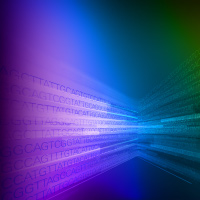SSmRNA + UMIs, the latest improvement in SMART-Seq technology
SMART (Switching Mechanism At 5' end of RNA Template) technology was first described in Biotechniques in 2001 (Zhu et al. 2001) and powers the whole-transcriptome RNA-seq kits in our SMART-Seq portfolio. It leverages the template-switching activity of reverse transcriptases derived from Moloney Murine Leukemia Virus (MMLV) to efficiently capture the 5’ end of transcripts. It is capable of synthesizing full-length cDNA templates up to ~15 kb, incorporating anchor sequences to the ends of the cDNA templates for subsequent cDNA amplification.
Takara Bio introduced the first RNA-seq kit using SMART technology in 2011, and Figure 1 highlights kits in the SMART-Seq portfolio since 2015. These products improved sensitivity while optimizing for specialized applications, such as 3’ differential gene expression, high-throughput analysis, and single-cell RNA-seq specifically formulated for cells with ultra-low RNA content (e.g., peripheral blood mononuclear cells [PBMC], T cells, and B cells). The SMART-Seq mRNA kits have become the industry standard for ultra-low input RNA-seq.

Figure 1. The SMART-Seq portfolio includes specialized kits for low-input and single-cell RNA. The addition of UMIs to the original SMART-Seq mRNA LP kit provides higher accuracy in RNA counting. Now it is possible to detect rare transcripts and identify rare cell types with high confidence.
The new SSmRNA + UMIs kit produces final libraries that include 5′-UMI-tagged fragments and internal fragments lacking UMIs, spanning the entire transcript. These libraries enable a combination of full-length RNA-seq with quantitative RNA counting. The complete SMART-Seq chemistry with UMI incorporation is shown in Figure 2.
SSmRNA + UMIs chemistry

Figure 2. UMIs are now included in SMART-Seq technology for ultra-low amounts of RNA and single cells. Nontemplated nucleotides (depicted as XXXXX), added by SMARTScribe Reverse Transcriptase (RT) hybridize to the UMI-containing TSO. This provides a new template for the RT. The SMART adapters used for amplification during PCR—added by the oligo(dT) primer and TSO—are indicated in green. 5’ ends of the oligo-dT and SMART-Seq mRNA PCR Primers are chemically modified (depicted by black stars) to prevent the ligation of sequencing library adapters to DNA fragments carrying the SMART sequence during sequencing library construction. cDNA is enzymatically fragmented, stem-loop adapters (red and blue) ligated, and the molecules extended, all in a single tube. Extension produces linear molecules that are then amplified and indexed to generate Illumina-compatible libraries with unique dual indexes (UDIs; light gray). The final library includes UMI (yellow)-tagged fragments as well as internal fragments (that do not carry UMIs) spanning the whole gene body.
SSmRNA + UMIs combined with our free Cogent NGS data analysis tools offer a complete workflow from cDNA synthesis to analysis (Figure 3). Cogent NGS Analysis Pipeline (CogentAP) maps and reports RNA-seq data for full-length UMI-based or UMI-agnostic transcriptome analysis. Included are gene and transcript counting, gene fusion detection, and immune profiling analysis. The Cogent NGS Discovery Software (CogentDS), an interactive data visualization tool, uses output files from CogentAP for downstream cluster analysis.

Figure 3. SSmRNA + UMIs combined with Cogent NGS data analysis tools are a complete solution for full-length transcriptome analysis and RNA counting for single-cell and ultra-low-input RNA-seq. The kit's workflow goes from cDNA synthesis to library prep. Sequence on an Illumina instrument and use the resulting FASTQ files as input for our free analysis software. Output from CogentAP can be input for CogentDS to create Uniform Manifold Approximation and Projection (UMAP) and t-Distributed Stochastic Neighbor Embedding (t-SNE) plots.










